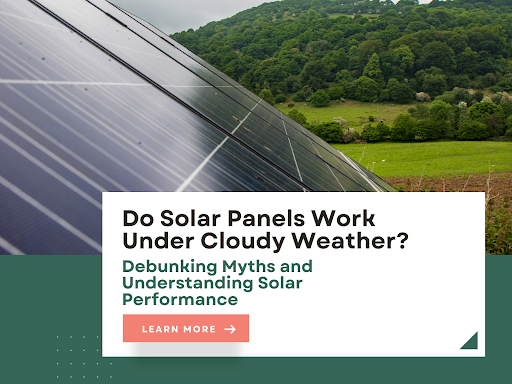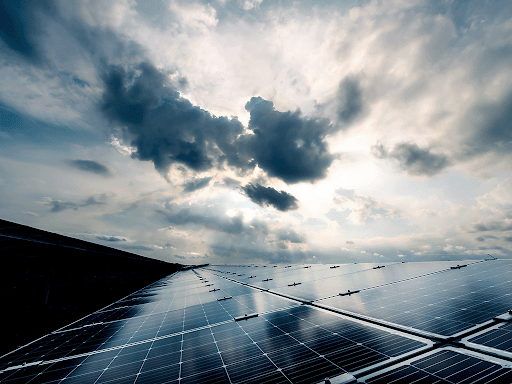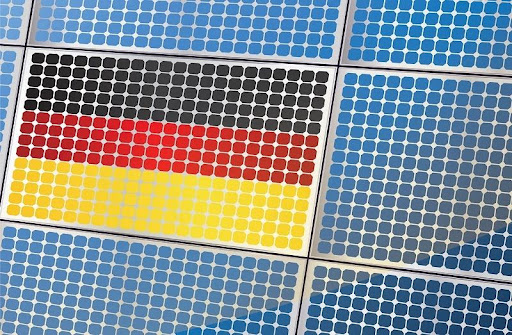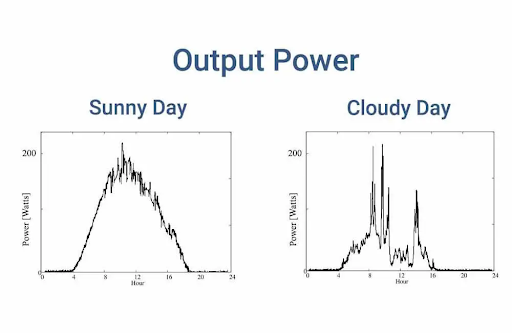Do Solar Panels Work Under Cloudy Weather? Debunking Myths and Understanding Solar Performance

In the ever-evolving realm of renewable energy, solar power stands tall as a beacon of sustainability. However, amid its rise, a common misconception has taken root: the belief that solar panels cease to function efficiently on cloudy days. This notion, though widely held, couldn’t be further from the truth. In this comprehensive guide, we will delve into the intricate relationship between solar panels and cloudy weather. Join Terawatt Solar, as we unravel the impacts of cloud cover on solar production and explore the multifaceted aspects of weather that influence solar power system performance.
The Dynamics of Solar Power Generation in Cloudy Conditions
Understanding Solar Panel Output Variation
Some critics assert that solar panels are virtually dormant when shrouded by clouds. Contrary to this belief, solar panels are remarkably resilient even in less-than-ideal weather conditions. While it’s true that they produce significantly less energy on cloudy days compared to days of clear, unobstructed sunlight, the assertion that they produce “nothing” is patently false. Research indicates that solar panels still manage to generate between 10 to 25 percent of their typical output on overcast days.

The Impact of Cloud Cover on Sunlight Intensity
To comprehend the dynamics at play, it’s essential to understand the science behind solar power generation. Under direct sunlight in an unclouded sky, sunlight intensity reaches its zenith. However, when clouds enter the picture, they diffuse and scatter sunlight, leading to reduced intensity at the surface level. In scenarios of light cloud cover or partial cloudiness, more of the incoming light gets scattered rather than reaching the solar panels directly. This results in a tangible reduction in solar energy production. In fact, cloudy sky conditions have the potential to slash sunlight intensity by over 70 percent, while heavily overcast conditions might lead to a staggering reduction of more than 85 percent.
Contrasting Scenarios: Germany’s Solar Success Story
A noteworthy example that showcases the adaptability of solar power systems in cloudy regions is Germany. Surprisingly, despite having lower annual average sunlight penetration compared to regions like Canada, Germany boasts the title of the world’s largest solar market. This intriguing phenomenon can be attributed to Germany’s commitment to solar energy and its strategic placement of solar panels to maximize energy generation even in cloudy conditions. The success of Germany’s solar initiatives underscores the fact that solar power is not solely contingent on abundant sunlight.

The Nuances of Cloud Cover: A Deeper Dive
Penetrating the Cloud Cover Misconception
One fascinating analogy that debunks the cloud cover misconception draws a parallel to human sunburn. Much like how you can get sunburned on an overcast day due to the presence of ultraviolet (UV) rays, solar panels also harness energy from sunlight, even in the presence of clouds. The crux of solar energy generation lies in the visible light spectrum, which is responsible for generating electricity in solar power systems. Even on partly cloudy days, both visible and ultraviolet sunlight can penetrate clouds. However, their journey through clouds involves reflection and refraction, causing them to scatter. Despite this scattering, solar panels still manage to capture a significant portion of this diffused sunlight, leading to energy production.
Cloudy and Cool Climates: A Viable Landscape for Solar Power
Living in a region characterized by frequent cloud cover and cool weather need not deter individuals from reaping the benefits of solar power. The adaptability of solar panels to diverse weather conditions enables them to continue producing energy, albeit at a reduced rate, even when clouds dominate the sky. This dispels the notion that solar power is exclusively suited to sun-drenched regions. As technology advances and solar panel efficiency improves, even areas with less sunlight can tap into the potential of solar energy to meet their power needs.

So, Do Solar Panels Work in Cloudy Weather?
Unveiling the Verdict
The question that reverberates through conversations about solar energy and cloudy weather is a resounding one: do solar panels work on cloudy days? The straightforward answer is a definite yes. Solar panels do operate during cloudy conditions; however, their performance is undoubtedly influenced by the presence of clouds. Contrary to the misconception propagated by skeptics, solar panels don’t shut down in the face of cloud cover. Instead, they continue to harness the available sunlight, albeit at a diminished capacity compared to sunny days.
Truth Behind Cloudy-Day Solar Power
The clouds that dot the sky are not harbingers of doom for solar power systems. They may momentarily obscure the sun’s brilliance, but they don’t render solar panels impotent. Science and technology have illuminated the path, revealing that solar panels do indeed work in cloudy weather. Their capacity to capture diffused sunlight and convert it into usable energy underscores their resilience and adaptability. So, as you contemplate embracing the realm of solar energy, dispel the cloudy-day myth and embrace the potential of sustainable power generation, regardless of the weather that graces the skies above.
Terawatt Solar: Pioneering Solar Solutions Regardless of Weather
As advocates for sustainable energy solutions, Terawatt Solar stands as a beacon of innovation in the solar power industry. Regardless of weather conditions, Terawatt Solar’s cutting-edge technology and commitment to excellence ensure that your solar power system functions optimally. Our solar installations are designed to harness energy even under varying levels of cloud cover, guaranteeing that you reap the rewards of solar power year-round.